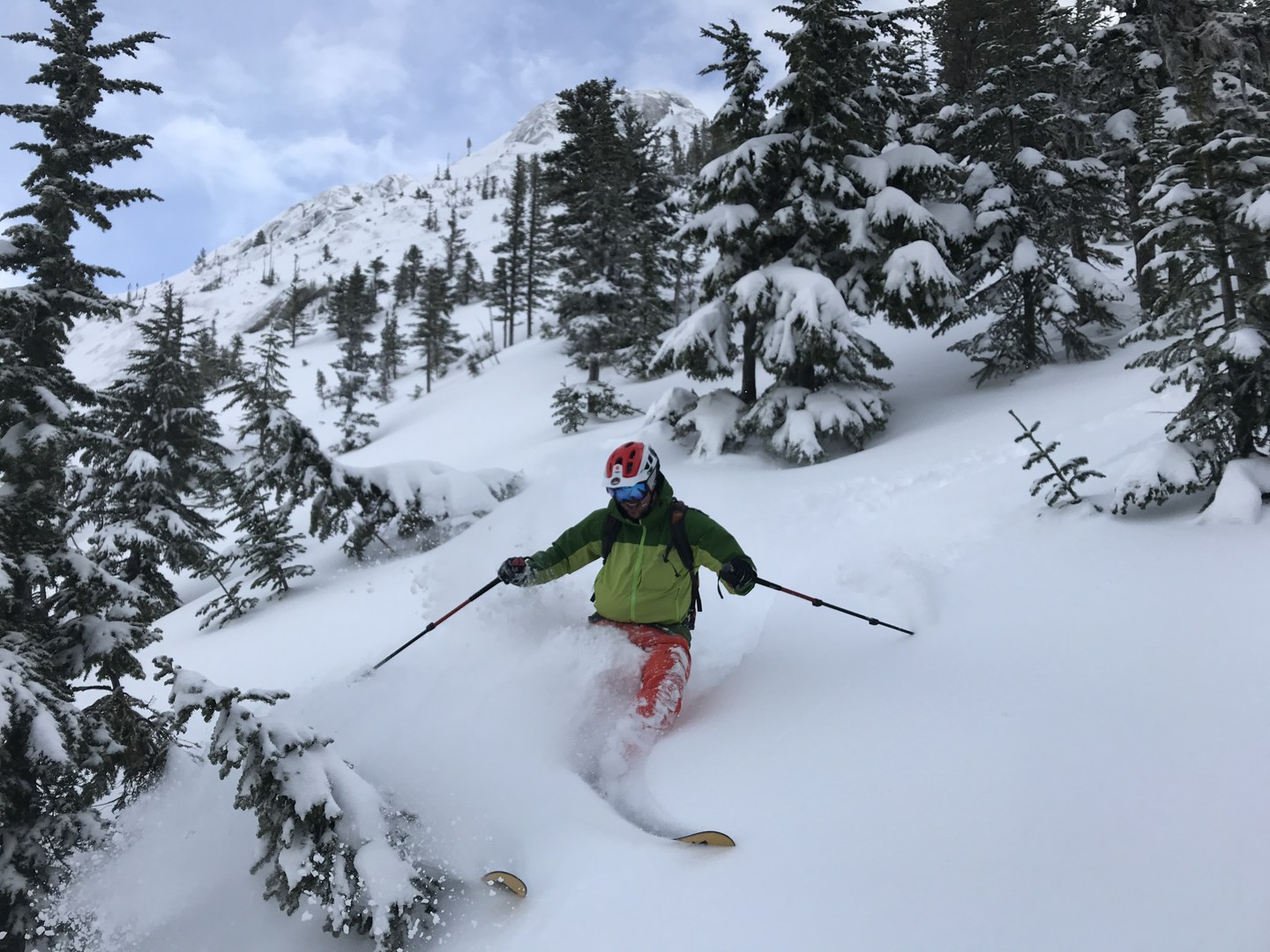You are here
If you travel in the mountains in winter, you probably already know just how risky avalanches can be. Chances are you have already taken a Level 1 avalanche course. This is awesome. But the Level 1 course is just the beginning. It teaches you what isn't safe. What it intentionally doesn't do is give brand new backcountry users the tools to decide what is good to drop into. Because that requires experience, and a bit more instruction. Unfortunately, many folks don't bother with this step. So I've put together five skills that I found most helpful for improving my route finding and overall approach to winter backcountry travel.
Here are five skills that you’re going to learn if you take one of these four-day courses.
Risk ratios
Every time I hear someone say, “Bruh, this line is safe, let’s give’r,” and “Oh don’t worry, I’m really safe when I go out,” it reminds me of why it’s so critical that people who are regularly getting out into the backcountry take the Level 2 Avalanche course (or AST 2 and MAT in Canada). The moment someone thinks they are "safe" is when things get risky. The reality is that a line is never going to be safe or unsafe; it's a spectrum. On my first day working for Cloud Nine Guides, my boss did me a big favor when he gave me a hard time for using the word safe in an email to a client. “In this business there is no such thing as safe,” he said, “just varying levels of risk.” This key lesson is foundational to Level 2 Avalanche courses, and it has carried into all activities I do. Whether I'm checking the forecast or looking at how many other parties are skinning up, it all gets added to my risk equation. If the snow is feeling spongy or the sun is a lot hotter than was forecasted, I start adjusting my “riskometer.” When we adjust our plans, change objectives, and shorten the turnaround time, that risk level may look a little better. The important part is never stop adjusting, and never take anything as an absolute. The moment you think you’re safe is when things can sneak up on you. As one keynote speaker at an avalanche talk once said, “Confidence kills.”
Let the terrain elevate you
You know those older skiers you often see on a skin track who never seem to be moving fast but are always ahead of you? They often seem to be getting out of the set skin track to make their own. They know that it’s all about using the terrain to move you upward, not forcing steep skin tracks. This idea is popularized by the famed 2-million-foot ski tourer and environmental activist Greg Hill. Using terrain efficiently to gain upward progress, finding weaknesses in the micro terrain, and choosing skin tracks that work for you, not against you, will get you those extra laps. It’s a key part of what getting extra time with guides will teach you.
Ongoing snow assessments
This is like the idea of a risk ratio, but it is more specifically related to snow. In a Level 1 course you’ll have covered the tell-tale signs like wumphing and cracking. But often things aren’t so obvious. Simple techniques like hand shears or using your pole to probe and feel around for potential layers are solid methods to establish whether the risk is going up, though they are rarely sufficient to understand if it’s going down. Like all snow skills, the context that only a professionally run course can provide is key.
Complex burials
The classic skill you hope you’ll never actually have to use. Practicing burials with multiple beacons at once, beacons overlapped, and in more challenging terrain is all part of most Level 2 Avalanche courses. Hopefully you will never have to use this skill, but when you start adding in complexities, things get squirrelly real quick. Practicing and getting feedback for these kinds of eventualities is really handy.
Ski cut
This is a really excellent skill to have, and it should definitely not be attempted without certified instruction. Ski cutting is the act of using your body and skis to intentionally trigger an avalanche by cutting a line above the tension zone. It’s a great way to quickly make a route less risky, but it is also exceedingly dangerous if you get it wrong. Level 2 courses will help you locate and practice how to identify trigger points and when and where to use this technique.
If you're looking for a course provider, head over to the American Avalanche Associations website for their providers. If you are in British Columbia, I highly recommend taking AST 2 courses out of Golden. They move between the Rockies and Selkirks, and you'll experience a really broad selection of snow conditions. Plus you'll get to access some of the best skiing in the world, namely Rogers Pass.
- Cloud Nine Guides: Full disclosure: I used to work for these guys.
- MTN Guiding: I've worked with Kevin, and he's a rad dude.
- Yamnuska: Fourth best, but they offer more options that suit many schedules.





Comments
Sign In and share them.